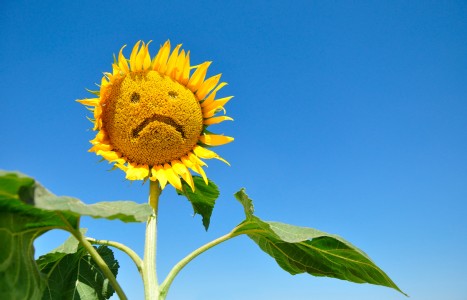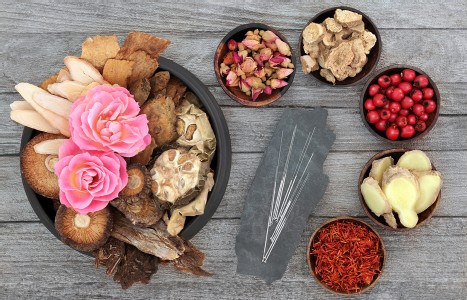Did any of you ever get the feeling in school that it simply was not OK to speak about wanting to be successful? To get into the nitty gritty details of how to make money in practice? Maybe you were even someone like me who was directly told by someone in a position of power that I needed to take what I could get because in private practice, I wouldn’t make money.
Extraordinary Circumstances: Cultivating Relationships With Chong Mai
- The primary channels (jing) are what most of us study and use chiefly in practice. The collaterals (luo) are less often utilized.
- Some of our patients require a deeper level of intervention than is reachable via the primary channels.
- Chong mai is the deepest of all the extraordinary vessels. A chong mai pulse indicates the person is struggling with something fundamental, foundational in their lives.
Treating the shen-spirit is challenging. It goes beyond the role of “doctor” and begins to enter the realm of “shaman” or “priest”; roles many of us are unprepared to take on. But at some point we may find ourselves ready for pathways to cultivate this aspect of ourselves.
Channels and Collaterals
As acupuncturists, the channels and collaterals (jing luo) are the major tools used to treat our patients. The primary channels (jing) are what most of us study and use chiefly in practice. The collaterals (luo) are less often utilized.
I recall a teacher describing the difference between the channels and collaterals. The channels (jing) are the pathways of our lives, the main paths, the normal flow: the physiology. The luo are the distractions or challenges we encounter that take us off course, disrupting the smooth flow of our lives.
The Nei Jing says the luo manifest states of inflammation, rebellious qi, pain, blood stagnation and shen disturbance. They are a holding place for unresolved pathology. They hold onto the discomforts of our lives, creating symptoms of dis-ease. Rebellious qi is a key symptom: signs the normal flow of our lives have been disrupted; while shen disturbance shows a lack of harmony.
The Nan Jing introduces the extraordinary vessels as “reservoirs” and “ditches” for the primary channels. This makes the extraordinary vessels unique. They act as both channels and collaterals, showing their special importance.
Some of our patients require a deeper level of intervention than is reachable via the primary channels. They require us to take on the role of shaman as well as doctor, to deal with the existential concerns of life.
Chapter 27 of the Nan Jing creates an image that the extraordinary vessels were tools utilized by “the sages of antiquity” for “extraordinary situations.” They are the tools to be used for the jing shen: essence-spirit relationship – the most challenging events in life.
Pulse and Chong Mai
Pulse is the major method for diagnosis in Chinese medicine. When we are assessing the type of stress experienced by our patients, understanding the extraordinary pulses can help us determine the level of intervention required.
Li Shi Zhen writes in his Classic on Pulse Diagnosis; “Chong Mai diseases are evident when the three pulse positions are firm and uninterrupted. Usually the pulse is also wiry and full.”
Chong mai is the deepest of all the extraordinary vessels. A teacher of mine called it “the blueprint” of the body, which gives birth to all other channels in the body.
The way to distinguish a “chong mai pulse” is by finding a quality that extends through all three pulse positions, from the cun, through the guan, into the chi, creating what seems a continuous pulse that, as Zhen writes, is usually wiry and often full. This is found in the middle level of the pulse.
A uniformity in all three positions in the deep level of the pulse relates to ren mai, while the superficial level of the pulse relates to du mai. The center relates to chong mai.
A chong mai pulse indicates an issue deeper than that of the primary channels. Something within the person’s constitution is being stressed or stirred up, demanding attention.
The Many Roles and Trajectories of Chong Mai
There are many ways to think about chong mai. It has many roles, just as it has many trajectories. It is the “sea of blood.” It is also the “great luo of shao yin.”
Chong mai is the basis of heart-kidney communication. Stagnation within chong mai can relate to this: the jing shen. Much of the main trajectory of chong flows through kidney points on the abdomen and chest to fulfill this function.
Chong is also the sea of blood, beginning at the region of the uterus. It is a channel of fertility and creation, not only for a fetus, but also for our lives: development of the self as it gives birth to the “sea of yin” (ren mai) and the “sea of yang” (du mai) – bonding and self-determination.
Chong “emerges” as a channel from the point ST 30 (Qi Chong), the shu-transport point for the “sea of food and drink.” This designates chong as the foundation for digestion and assimilation: the qi for transformative metabolism.
From ST 30 the trajectory flows into the kidney points of the abdomen, many of which “regulate chong and ren,” as well as utilize kidney qi to support spleen and stomach qi.
Once chong reaches the chest, it travels through the “kidney” shu-transport points impacting the internal organs, especially their shen aspects. This is mirrored on the back on the bladder channel.
Clinical Applications
Points that regulate chong and ren are useful and interesting clinically. Acupuncture points can illuminate much about the role and functions of a channel.
In TCM, regulation of chong and ren is usually seen as relating to menstruation and fertility. However, in classical acupuncture the view is more expansive.
As an extraordinary vessel, chong relates to the matrix of the body, but also the ming, or destiny: the basic “thrust” in life.
Chong is the foundational pathway: the way our (kidney) jing-essence communicates and expresses itself through the (heart) shen to fulfill our ming (destiny). It is the way we express and create our lives, which is carried out by the spleen-stomach and its metabolic creative process. Chong is the blueprint from which we build our lives, and direct our spirit and will into action and manifestation.
A chong mai pulse indicates the person is struggling with something fundamental, foundational in their lives; something with great meaning, such as identity or sense of direction: the way they are (or are not) dealing with their destiny and relationship between themselves (kidneys), the social world (spleen) and their spirit animation (heart). It can be an issue of qi (action/doing) or blood (feeling/being), but more likely the problem involves “harmonization” between doing and being.
ST 30 (Qi Chong), the place where the qi of chong emerges, is a famous point that “harmonizes qi and blood,” setting the theme for chong mai. The Ling Shu describes shen as a state of harmonization between qi and blood, the internal organs and their spirit aspects. Arguably, this is the chief role of chong mai in all its manifestations: harmonization as the method for cultivating shen.



